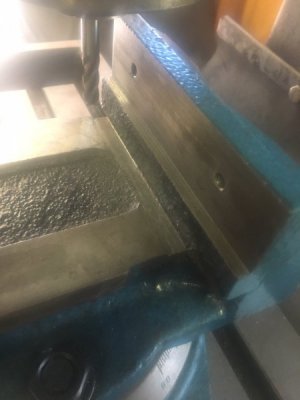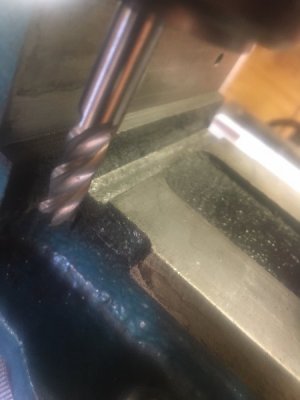- Joined
- May 25, 2016
- Messages
- 181
I took some advice above, and milled the vise casting down, so I can at least use a parallel for smaller parts. (pics attached)
If I look at pressing in some steel and milling it down to be level with the ways, any suggestions on material and/or how to attach? Press fit? Drill and tap? I can take it to my friends shop and surface grind it to try to get it close to even with the ways. Waste of time?


-Tom
If I look at pressing in some steel and milling it down to be level with the ways, any suggestions on material and/or how to attach? Press fit? Drill and tap? I can take it to my friends shop and surface grind it to try to get it close to even with the ways. Waste of time?


-Tom

